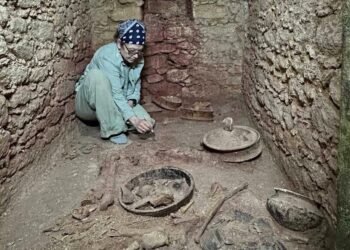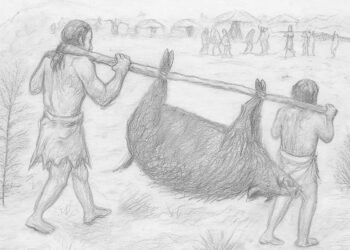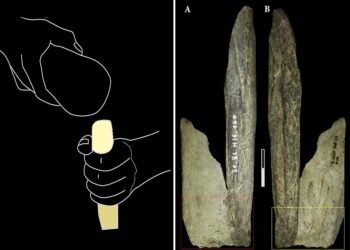Archaeologists have unearthed significant remnants of the ancient city of Fregellae, an agricultural and cultural hub in central Italy, that faced total destruction at the hands of the Roman Republic over 2,000 years ago.

The city, founded in the 4th century BCE near modern-day Arce in the province of Frosinone, played a strategic role as a Roman colony against the Samnites. However, in 125 BCE, the people of Fregellae revolted, likely demanding equal Roman citizenship, a right they had long been denied. This rebellion was swiftly crushed by Roman forces led by praetor Lucius Opimius, who razed the city to the ground.
The recent excavations of the site, conducted by a team from the Leibniz-Zentrum für Archäologie (LEIZA) and the University of Trier, have revealed a wealth of information about Fregellae’s final days and its economic significance. Professor Dominik Maschek, the project manager at LEIZA, noted that while historical records on Fregellae’s revolt are sparse, the archaeological evidence is filling in the gaps. “We hear about the siege, they tell us these people rebelled against the Romans, but we don’t know why,” Maschek explained to Live Science.
The excavation, which has been ongoing since 2015, uncovered the remains of an agricultural villa, constructed around 205 BCE, owned by local elites. The villa was a center of wine, fruit, and grain production. Large storage vessels and amphorae found on-site suggest that while the grain and fruit were likely intended for local consumption, the wine may have been exported to far-flung regions, including Spain and France, as part of the Mediterranean trade networks. “The wine was probably not only produced for the local market,” Maschek said, emphasizing the commercial reach of the villa.
The villa also bore the scars of the Roman army’s brutal assault. A layer of fire damage, along with fragments of pottery from the time of the revolt, supports the theory that the agricultural complex and surrounding fields were destroyed in the same attack that leveled the city.
The destruction of Fregellae dealt a devastating blow to the local economy. The city lay abandoned for over 170 years, with the region’s economy paralyzed by the loss of its agricultural production. The only subsequent use of the site was as a waste dump in CE 50, archaeologists found. Maschek emphasized the far-reaching consequences of the city’s fall: “The violent destruction caused lasting damage to the entire economy of the region.”
In addition to the villa, the excavation also revealed the remains of a Roman military camp, specifically constructed for the siege of Fregellae. Covering an area of 90 by 143 meters, the camp was fortified with defensive ramparts and a ditch, underscoring the military precision with which the Romans crushed the revolt. Maschek noted that the Roman forces seemed to have capitalized on the absence of Rome’s consuls, who were campaigning overseas at the time of the rebellion. Nevertheless, the people of Fregellae had underestimated the Roman capacity to swiftly deploy military forces, even without their highest-ranking officials present.
This discovery has not only shed light on Fregellae’s tragic end but also provided insight into the broader social and political struggles of Rome’s allies during the period leading up to the Social War (91–87 BCE). The rebellion at Fregellae foreshadowed a larger conflict where many of Rome’s allies demanded—and eventually gained—full Roman citizenship.
More information: Leibniz-Zentrum für Archäologie (LEIZA)
























